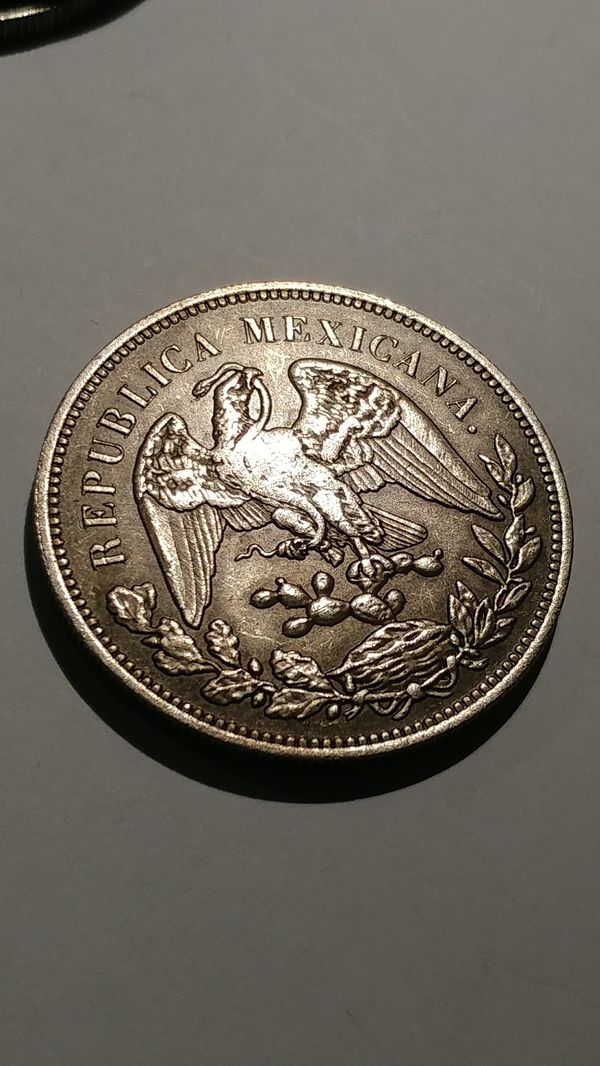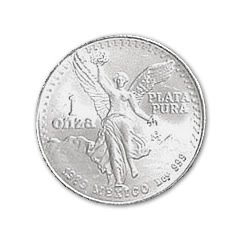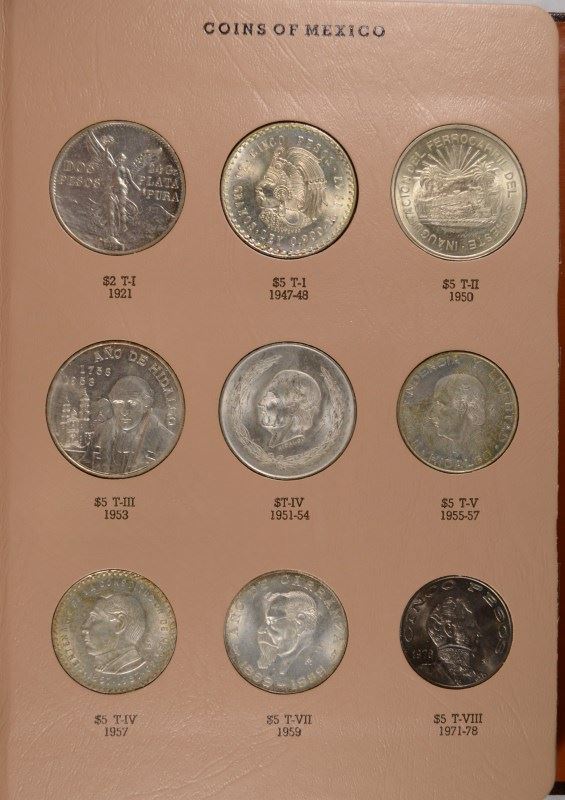
Its interest by investors has also made it one of the most copied and counterfeit coins. Sought after by investors and collectors for its enormous investment potential and historical value, until the South African Krugerrand was introduced in 1967, it was the world's purest gold coin. The reverse depicts an eagle perched on a cactus with a snake in its beak, Mexico's national emblem. The date in the bottom right-hand corner is 1821, the year in which Mexico gained its independence.

In the background, Popocatépetl and Ixtaccihuati, the two Mexican volcanoes. On the obverse of the coin we find a beautiful engraving of Winged Victory, the work of the artist Emilio del Moral, holding, as a symbol of victory, a laurel wreath in his right hand, in his left hand symbolising the attainment of freedom a broken chain.

It had a considerable circulation (12 million coins between 19), but, as it is no longer in production, it will in time become a coin with fair numismatic value. The Mexican 50 Pesos gold coin was made in 1921, among the first investment and commemorative coins, to mark 100 years since the beginning of the War of Independence against Spain.Ĭomposed of no less than 37.50 g of gold with a fineness of 900/1000 equal to 21.6 carats, it is the largest investment coin in existence. The 20 pesos coin, also known as the Aztec, features the Aztec calendar, the denomination in the legend and the pure gold content (15 g). The 2 pesos coin on the obverse shows the date and value (DOS PESOS) surrounded by a laurel wreath. The 2, 20 and 50 pesos have different designs. The 2.5, 5 and 10 pesos gold coins have on the obverse the same depiction of Don Miguel Hidalgo y Costilla (considered to be the initiator of Mexico's war of independence), the value of the coin in Spanish and the minting date. The reverse of all coins depicts the Mexican coat of arms represented by the golden eagle holding a snake in its beak perched on a cactus and the inscription 'Estados Unidos Mexicanos'. Mexican gold coins were minted by the Mexican mint, the 'Casa de Moneda de México', one of the oldest in the world and founded in 1535, to commemorate the revolution that led to Mexico's independence, and have face values from 2 pesos upwards.ĭue to the rarity and historical value of the coins, their price is determined both by their gold content and numismatic value. Mexico is a country rich in gold and silver deposits, and the Mexican Pesos is one of the most affordable and interesting gold coins, among the most sought after for its dual potential: investment and historical value.
MEXICAN RARE COINS FREE
Please sign up to our free newsletter to receive exciting news about coin and banknote auctions.The Mexican Gold Pesos: A Forward-Looking Investment We have a broad range of rare coins for sale. Graded AU58, it's in mint state and was formerly in the legendary collection of Dr A Patterson. The present record for the type is $75,000, set for an AU58-graded example from the Millenia collection in 2008.Ī 1732 Philip V 4 reales will also be offered, with an estimate of $30,000-35,000. " a true wonder coin that will elicit fierce bidding competition and should establish a record price for the type."

"Real Mint State examples such as the present coin are what numismatic dreams are made of… The auction house describes it as "a wonderful example of the rare and iconic first date in the series, currently the second finest certified at NGC, and certainly among the very finest extant… It was issued in Mexico City, which became a Spanish colony in the 16th century. It's a key piece for collectors as it's the first date in the pillar dollar series, so named for the pillars of Hercules that flank the Spanish arms on the reverse. The 1732 8 reales looks likely to set a new auction record An MS63-graded 1732 Philip V 8 reales will lead Heritage Auctions' August 11 sale of Mexican coins.


 0 kommentar(er)
0 kommentar(er)
